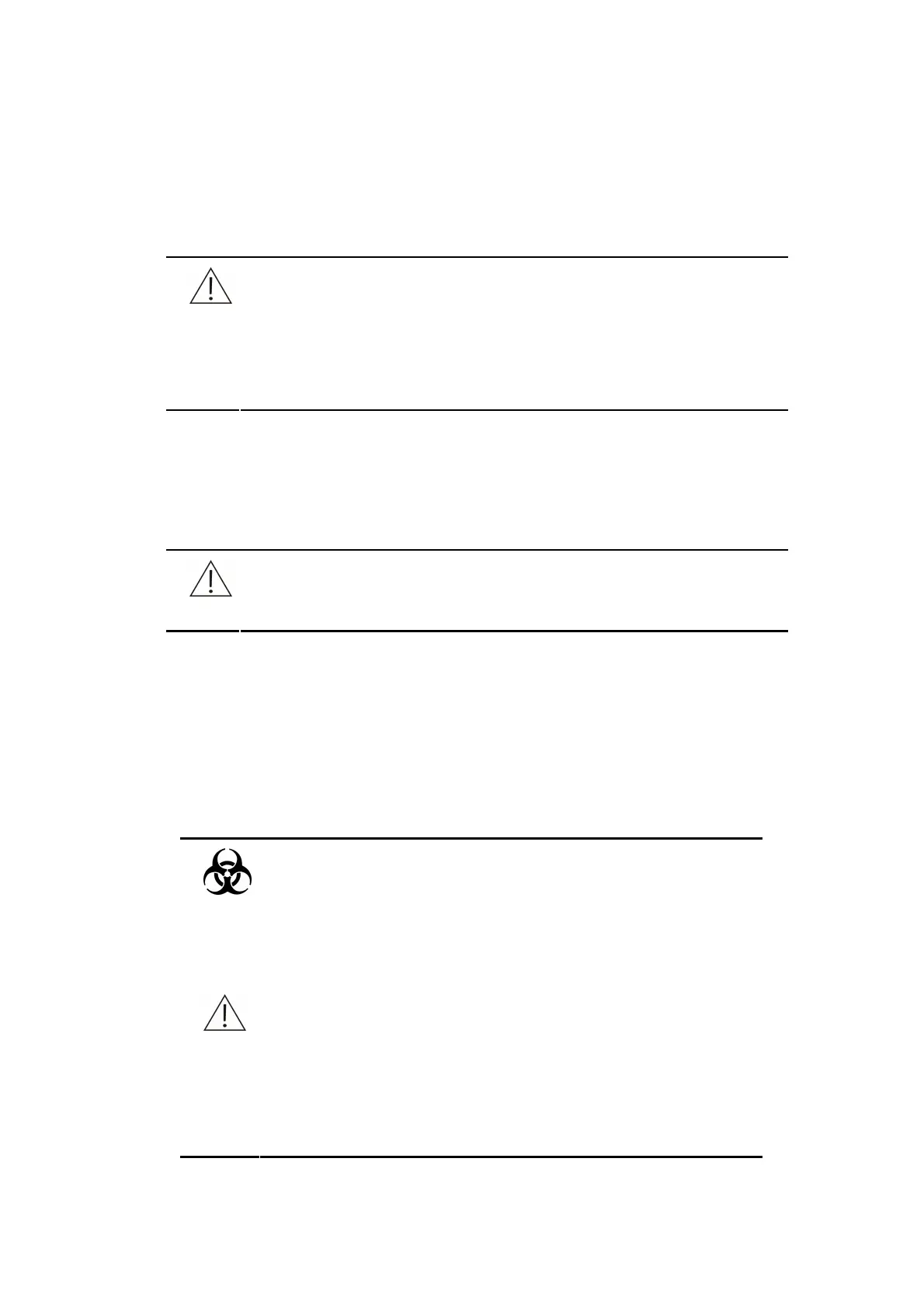7 Service and Maitenance 7-3
7.2 Daily Maintenance
7.2.1 Checking Remaining Deionized Water
CAUTION
The water must meet requirements of the CAP Type II water.
When placing the deionized water tank, ensure the height difference
between the top of the tank and the bottom of the upper cabinet is within
500-800mm.
Ensure the deionized water pickup tube is not blocked, bent, or twisted.
1. Check how much deionized water is left in the tank before test.If enough,
proceed to the 5
th
step. If not much, proceed to the next step.
2. Unscrew (counter-clockwise) the tank cap and remove the cap together with
the pickup tube and the sensor.
CAUTION
After removing the cap of the deionized water (together with the pickup
tube and sensor), place it on a clean table.
3. Add deionized water to the tank.
4. Screw (clockwise) the cap together with the pickup tube and the sensor back
onto the tank until secure.
5. Ensure the deionized water pickup tube is not blocked, bent, or twisted.
7.2.2 Emptying Waste Tank
BIOHAZARD
In case your skin contacts the sample, control or calibrator, follow
laboratory safety procedure and consult a doctor.
Dispose of the wastewater in accordance with your local or
national guidelines for biohazard waste disposal, and consult the
manufacturer or distributor of the reagents for details.
CAUTION
When placing the waste tank, ensure the height difference
between the top of the tank and the bottom of the upper cabinet is
within 500-800mm.Ensure the deionized water pickup tube is not
blocked, bent, or twisted.
A blocked, bent or twisted waste tube may lead to wastewater
overflow, which may damage the analyzer.
